Each of the Green Bank Telescope’s 2004 surface panels is adjusted by a small, computer-controlled motor called an actuator, seen here at the edge of the dish. The 2.3-acre surface of the GBT requires 2209 actuators to maintain its accurate surface shape.

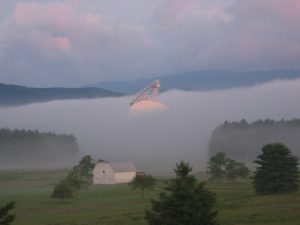
Giant in the Mist
Nearly every dawn sunrise in Green Bank is blanketed in fog. The Green Bank Telescope (GBT), 485-feet high, is only just peaking up over the morning mist.
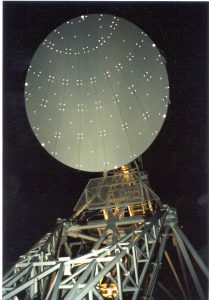
Keeping in Shape
Both the 100-meter dish and this smaller subreflector of the Green Bank Telescope must maintain their perfect shapes to properly bounce radio waves into the GBT’s receivers. An array of little reflectors help engineers gauge the shape of this smaller dish.
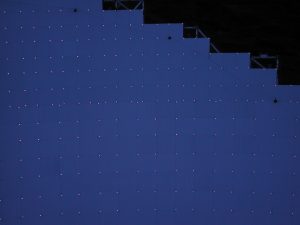
Glowing Eyes
The 2004 panels of the Green Bank Telescope have apple-sized reflector bulbs embedded in them. Engineers can light the surface of the telescope and measure the brightnesses of each reflector to map the curvature of the dish. The shape of the GBT’s dish, a perfect parabola, must be kept for the telescope to reflect radio waves accurately into its receivers.
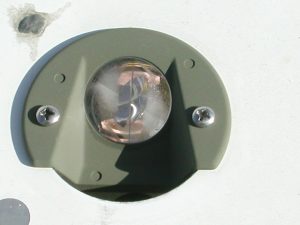
Retroreflector
This apple-sized reflector bulb is one of thousands embedded into the surface panels of the Green Bank Telescope. Engineers light the surface of the GBT and measure the brightnesses of each reflector to map the curvature of the dish. The shape of the dish, a perfect parabola, must be kept for the telescope to reflect radio waves accurately into its receivers.
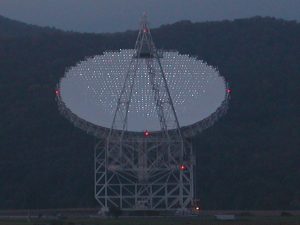
A Thousand Points of Light
The 2004 panels of the Green Bank Telescope have apple-sized reflector bulbs embedded in them. Engineers can light the surface of the GBT and measure the brightnesses of each reflector to map the curvature of the dish. The shape of the dish, a perfect parabola, must be kept for the telescope to reflect radio waves accurately into its receivers.





